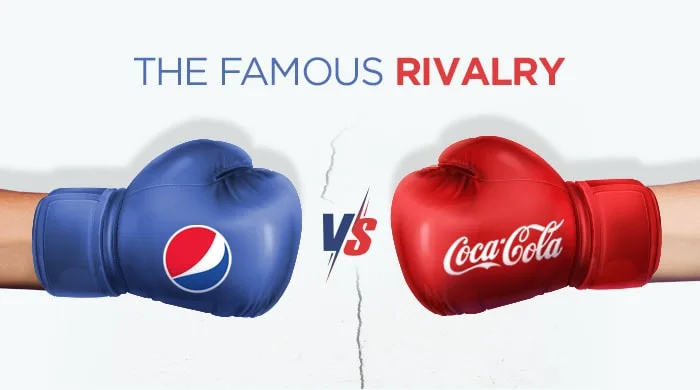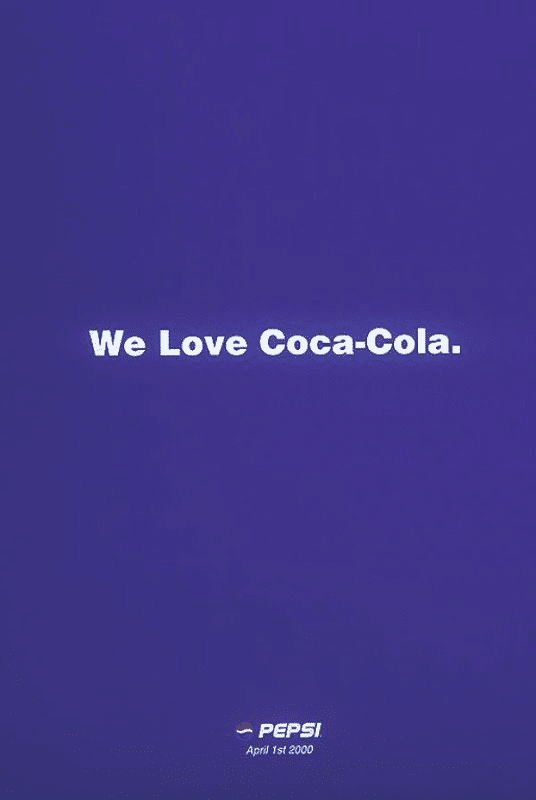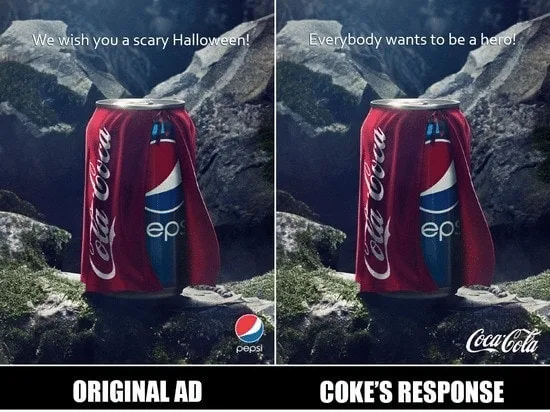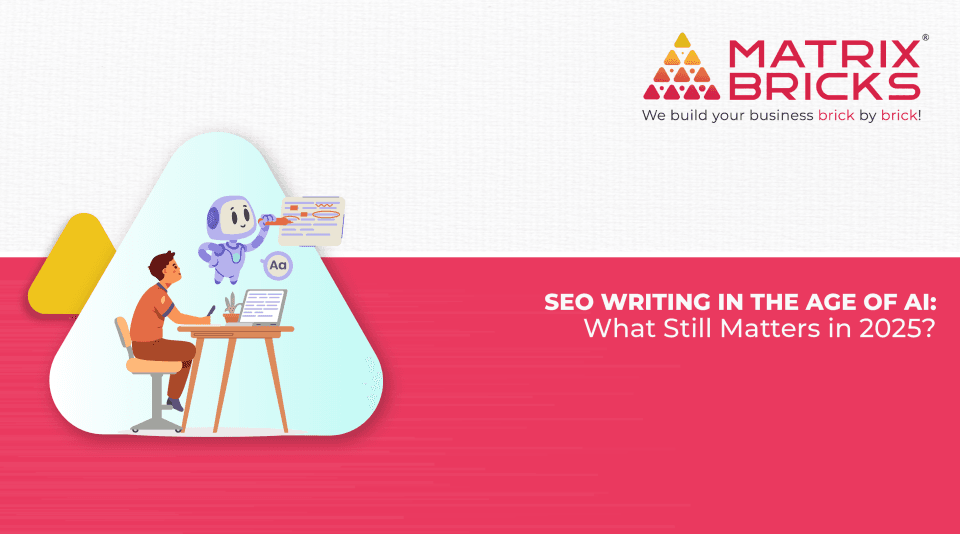
Coke and Pepsi are the two brands which are known for their rivalry. The soft drink market is almost a duopoly market especially when it comes to cola wars. Whenever a marketer wants to take an example of brand rivalry, his discussion will be incomplete without taking the example of Pepsi vs Coke. Coke has always behaved as the elder brother who is more mature and reserved and only wants what is best for the family. But Pepsi on the other hand has always taken on the elder brother and ensured that it is not hunky dory for the world’s leading cola brand. Both have had all kinds of wars including price wars, distribution wars, and trade discount / scheme wars.
Some of their ads are


The ad shows the story – Both original ad of Pepsi, and Coke’s answer implying that Pepsi wants to become like Coke.
Twelve years ago, a disgruntled Coca-Cola employee tried to sell top-secret Coke documents to Pepsi. At Coca-Cola, secrecy is the lifeblood of corporate culture. Workers are routinely subjected to security checks. Surveillance cameras dot every corner of the building. Their crown jewel, the original Coke formula, is supposedly locked in a multi-million dollar vault; only two people on Earth know it, and they fly on separate planes when traveling in case of an accident.
A multi-million dollar vault supposedly holds the secret Coke recipe. In this hyper-secretive culture, Joya Williams was the model employee. The daughter of a church deacon and a Sunday school superintendent, she’d worked for 3.5 years at Coca-Cola’s largest bottling factory before joining corporate in 2005. As the administrative assistant to the Global Head of Marketing, she was entrusted with sensitive emails, internal documents, and yet-to-be-released products, according to a 2007 article in Atlanta magazine.
But 14 months into her $50k-per-year job, she began to feel she wasn’t being treated right — and she formulated a plan to stab them in the back.
In late 2005, Williams was introduced to a friend of a friend named Edmund Duhaney. A 40-year-old father of three, Duhaney had just gotten out of prison on cocaine charges and was looking for work. Williams told him she possessed a trove of “highly classified” Coca-Cola documents that would likely be worth money to the company’s major competitor, Pepsi — but she’d signed a non-disclosure agreement and couldn’t deliver the goods herself. She needed a middle-man, and Duhaney knew just the guy: his buddy Ibrahim Dimson, a young white-collar embezzler and self-proclaimed “charmer” he’d met in prison.
Two weeks later, much to the delight of Joya Williams, Dimson received a call from a supposed PepsiCo employee by the name of “Jerry.” He was interested and asked Dimson for proof he could deliver. Dimson faxed Jerry 14 pages of Coca-Cola documents — almost all marked “confidential information” or “classified-highly restricted” — and told Jerry that he needed to wire money to a provided bank account to show he was a “serious partner.” Shortly thereafter, he received a transfer for $5k. And then, the real heist began.
As a trusted middle-woman between top-level execs, Joya Williams procured not just troves of documents (presentations, internal emails, development proposals), but actual samples of unreleased products.
Late one night at the Coca-Cola Headquarters — a towering, modern monstrosity in midtown Atlanta — Williams stuffed her bag with manila folders of classified paperwork and a small vial of a “secret” product under development. Once procured, these artifacts were passed on to Dimson, who promptly convinced Jerry to purchase them for $75k — $30k upfront and $45k later after tests.
In mid-June, the two met at Hartsfield-Jackson International airport in Atlanta, where, in broad daylight, Dimson handed over a brown Armani Exchange duffle bag full of the goods in exchange for a Girl Scout cookie box stuffed with cash. Dimson left the airport, got into a car with his pal, Duhaney, and booked it to Decatur, Georgia, where they divvied up the dough: $2k for Duhaney, $6k for Williams, and the lion’s share, $22k, for Dimson himself.
But the real payday came 10 days later, when Jerry rang Dimson and offered $1.5m for the remaining trade secrets. The trio had struck gold. But they were unaware of what was coming.
Jerry wasn’t actually a Pepsi executive, he was FBI Special Agent Gerald Reichard (AKA Gerry). Months earlier, when Pepsi received the trio’s initial letter, they’d promptly forwarded it to Coca-Cola, and informed them they had a leaker. In turn, Coca-Cola had brought in the FBI to conduct an undercover investigation.
On July 5, 2006, Williams, Dimson, and Duhaney were arrested on charges of wire fraud and unlawfully stealing and selling trade secrets.
Though Coke and Pepsi are each other’s biggest competitors, they never took their fight to a level that was unethical and wrong. Both the brands have healthy competition and are tremendously growing. Who is your favourite among them and what are your thoughts on this case study let us know in the comments down below.





